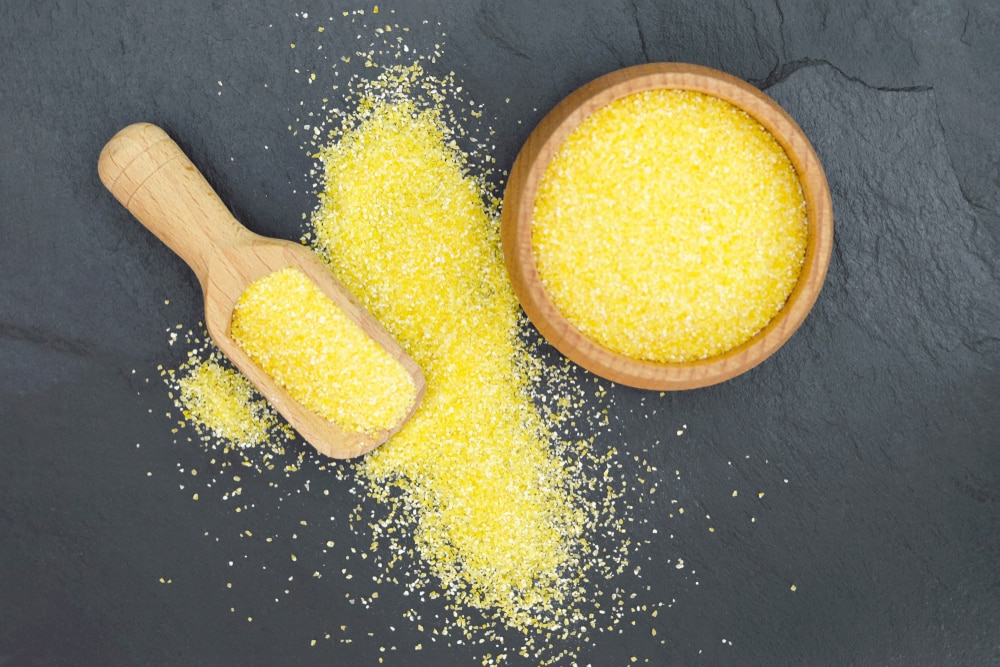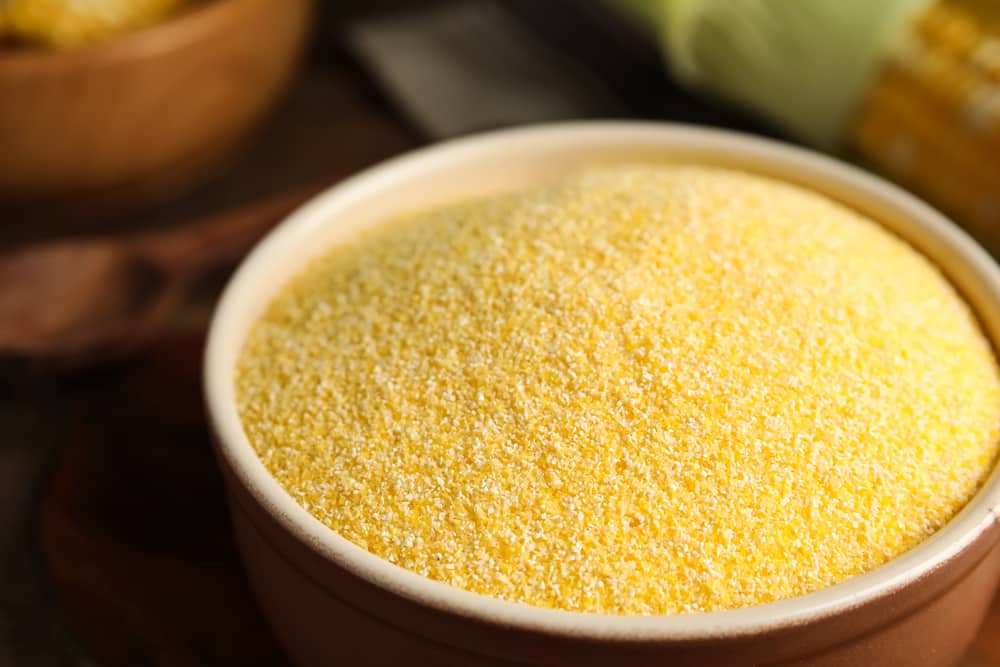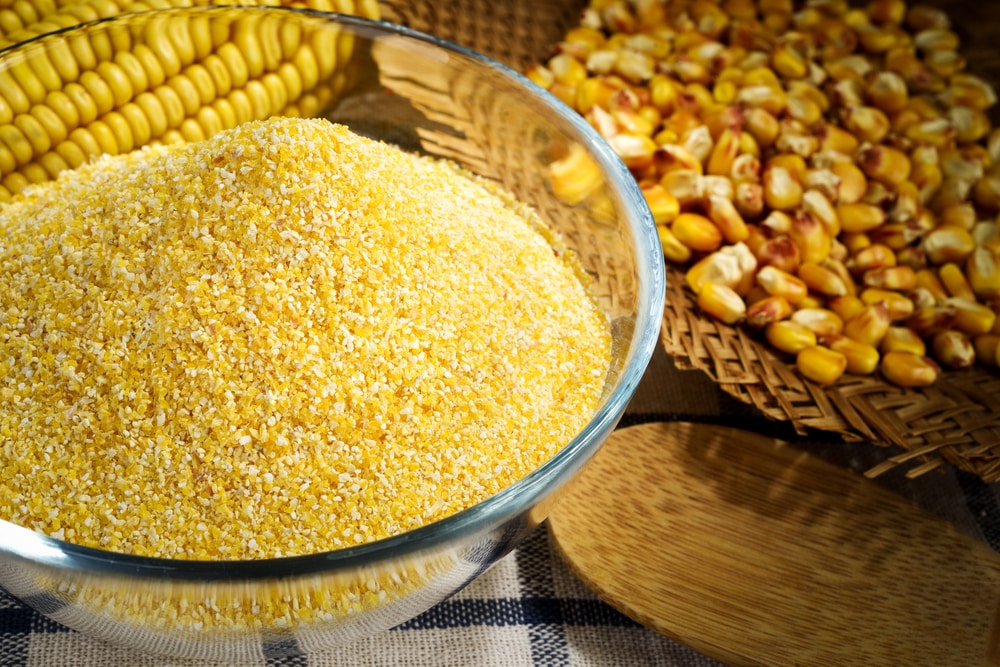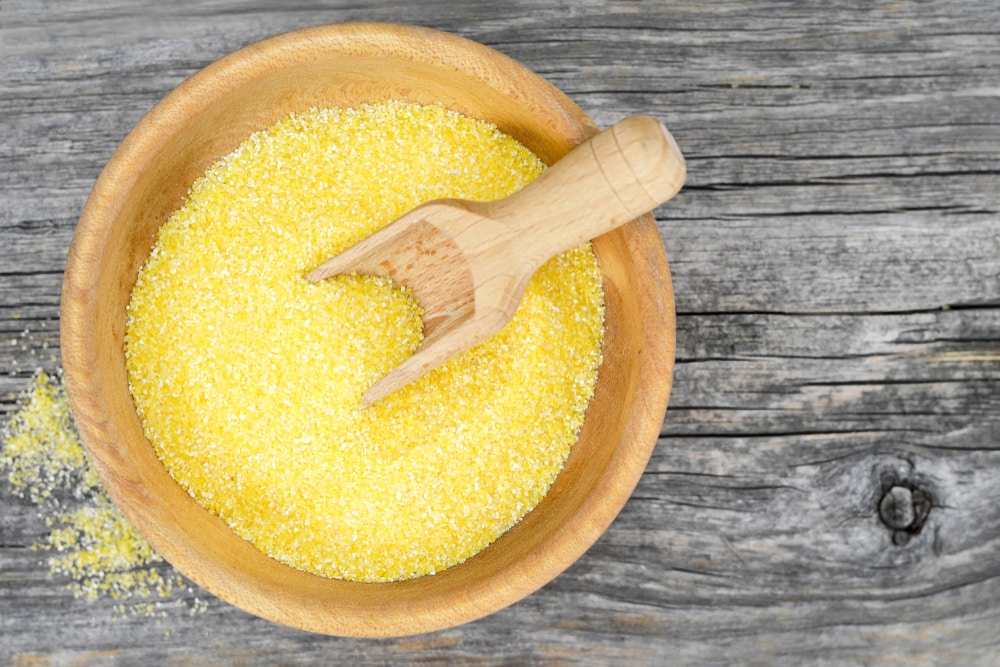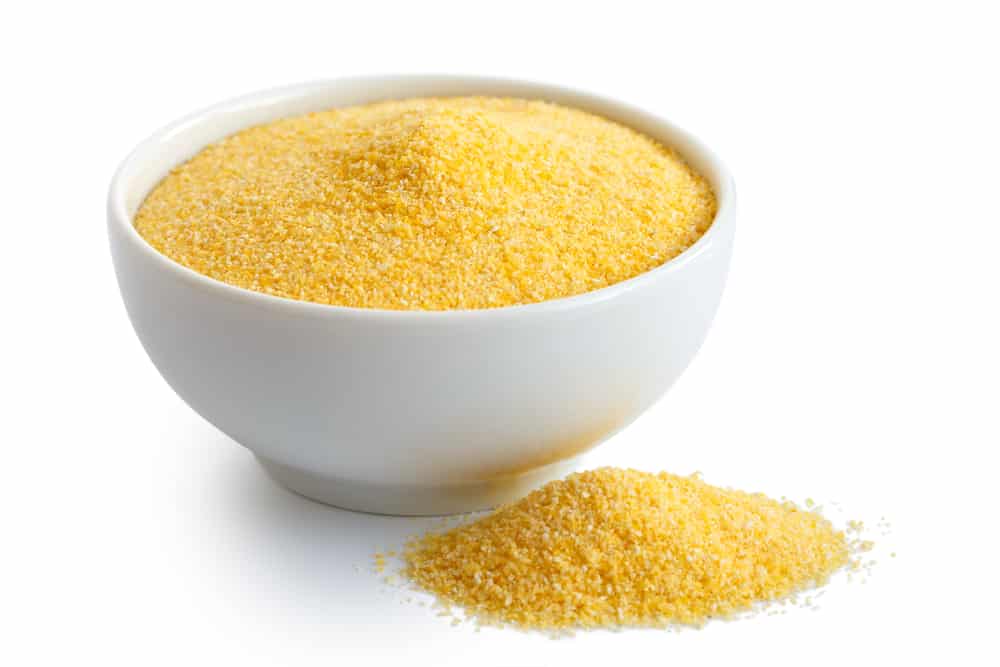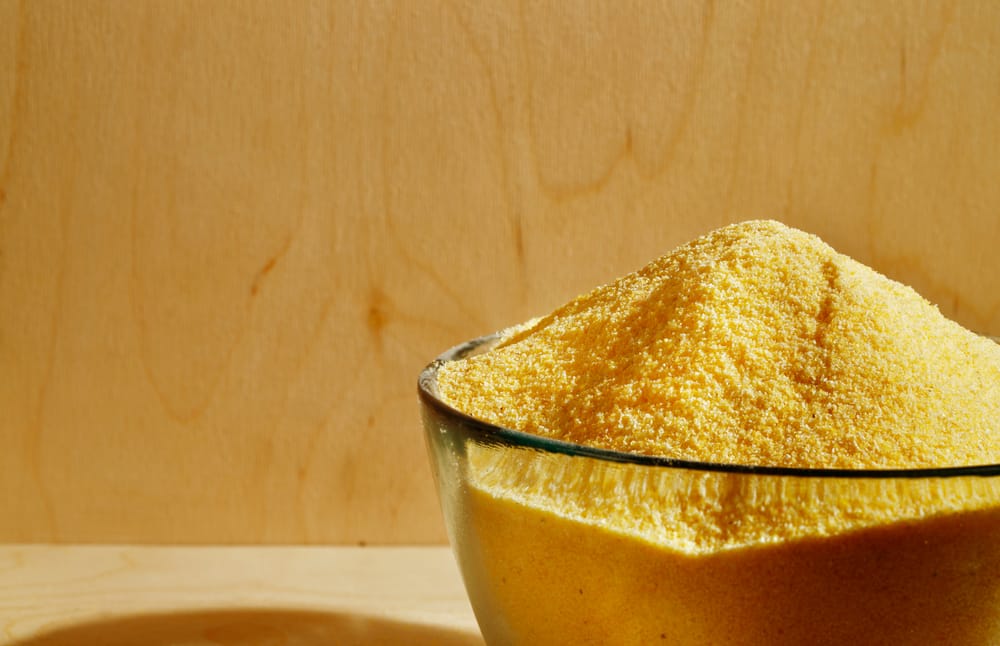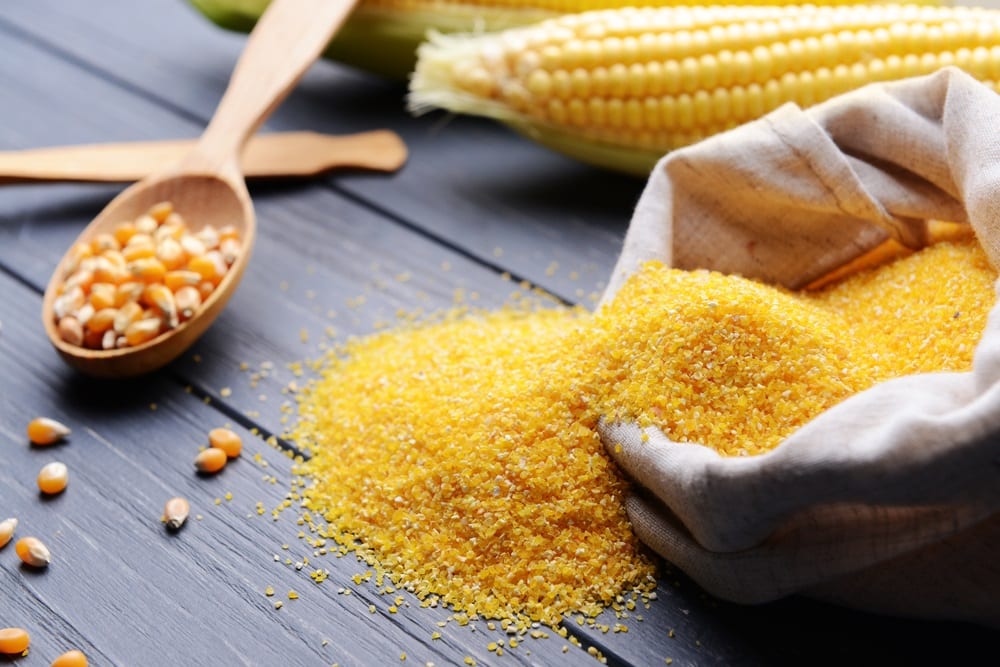
DISCLOSURE: This post may contain affiliate links, meaning when you click the links and make a purchase, I receive a commission. As an Amazon Associate I earn from qualifying purchases.
Cornmeal is simply coarsely ground dried corn (maize). In some countries, it is called a “maize meal”. If it is finely ground, it may be called “cornflour”.
During processing, the corn kernels are dried, then cleaned, and steamed. The tough outer shell/hull is removed then what remains is crushed between steel rollers or stones.
[amazon box=”B003ZZ69I4″]
For steel ground corn, both the husk and kernel have been removed. This reduces the nutritional content but increases the shelf life so most commercially available cornmeal is processed this way.
It is unlikely that you will find black specks in this type of cornmeal unless they are bugs.
Stoneground cornmeal, on the other hand, is processed with some of the hull and germ remaining. It has better nutritional value, texture, and flavor but a shorter shelf life.
It should preferably be stored in the fridge or freezer to maintain its quality. This type of cornmeal is likely to have small black specks in it.
These are harmless and are leftover pieces of the hilar that join the germ to the rest of the kernel.
Either type can be used in recipes but we suggest using stoneground cornmeal if you can obtain it for better flavor and nutrition.
How Long Will Cornmeal Last?
Steel ground cornmeal will keep for up to 6 months if in an airtight container. If you intend to keep it any longer, put it in the freezer where it will last for two years or more.
Stoneground cornmeal perishes faster because it still contains some of the natural oils. It is best kept in the fridge where it will last for a month. In the freezer, it will be fine for a couple of years.
Black Specks In Cornmeal
What Are the Black Specks?
Black specks in your cornmeal may be one of two things. Either they are the remnants of the hilar or hull which are natural parts of the grain or they are bugs.
If your cornmeal is fresh and stoneground, the specks are probably not bugs and it is fine to go ahead and use it. If the cornmeal is steel ground, you need to look more closely.
Get a magnifying glass if you have one. Are the specks moving? Do they have legs?
If they are bugs, they are most likely booklice (Lipocelis bostrychophilia). These tiny, transparent insects are very common in stored grains.
They feed on flour, cereals, paper, etc. These may not appear as black though so if your bugs are black, they are probably weevils.
What Can I Do About It?
If you are not squeamish about eating the occasional bug, you can remove as many of them as you can then put the cornmeal into the oven at 120 degrees for about half an hour. This will kill them.
You can then go ahead and use the meal as planned. Humans often unknowingly consume bugs without knowing it and they don’t do us any harm.
Of course, the thought of it is awful but statistics show that the average American eats at least a pound of insects a year (unknowingly, of course).
If you prefer not to get the extra protein, you can, of course, throw away the cornmeal. Thoroughly wipe down the cupboard that it was stored in and wash the container with hot soapy water or clean it in the dishwasher.
Check any other foodstuffs that have been stored nearby as they will probably be infested too.
Buying Cornmeal Without Bugs
Not all bug infestations are your fault. Many times, the grain or meal we buy has already been contaminated before we buy it from the store.
The best you can do here is to check the sell-by date and buy your grains from a shop with a fast turnaround. Remember though, the best before date is simply the last date by which a producer will vouch for a product’s quality.
It is still safe to eat for a time after that. To be absolutely sure, you can buy whole grain corn and grind it yourself at home as you need it.
Storing Cornmeal Correctly to Prevent Bugs
Cornmeal is perishable and must be stored in an airtight container. A glass jar is perfect. Make sure it is completely clean and thoroughly dry before using it. Keep it in a cool, dark place.
Don’t store it under the sink (too damp) or over the stove (too hot). Storing your cornmeal correctly will prevent the growth of mold, prevent insects from getting in, and will retain nutritional content and flavor.
Conclusion
If you see black spots in your cornmeal, look more closely. If they are moving or there is a lot, they are probably bugs especially if the meal is steel ground.
If the meal is stoneground, the specks may be harmless bits of the grain. Trust your senses to tell you if your cornmeal is “off”. If it smells funny or has a cobwebby texture, throw it out and buy fresh.
All the best!
